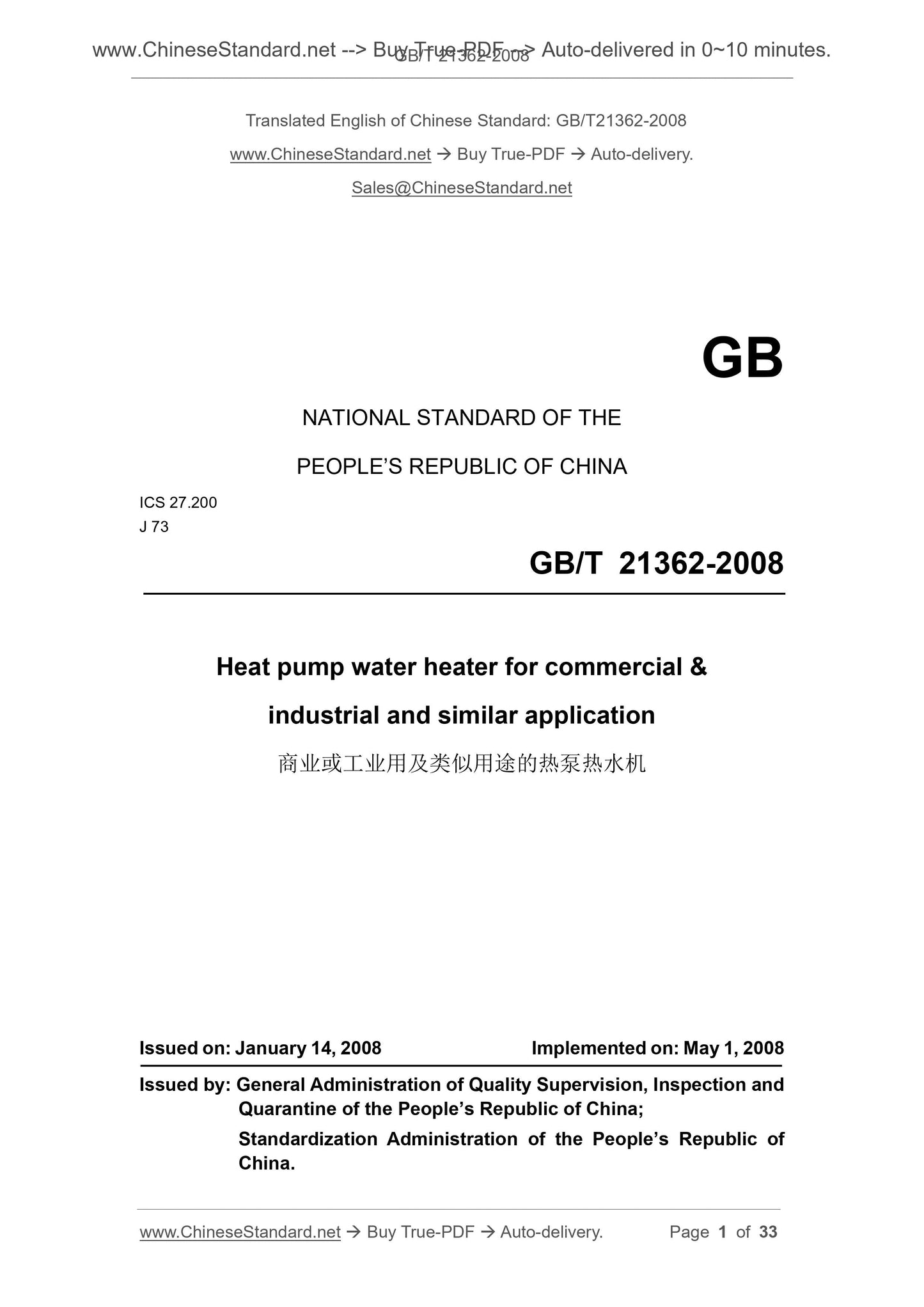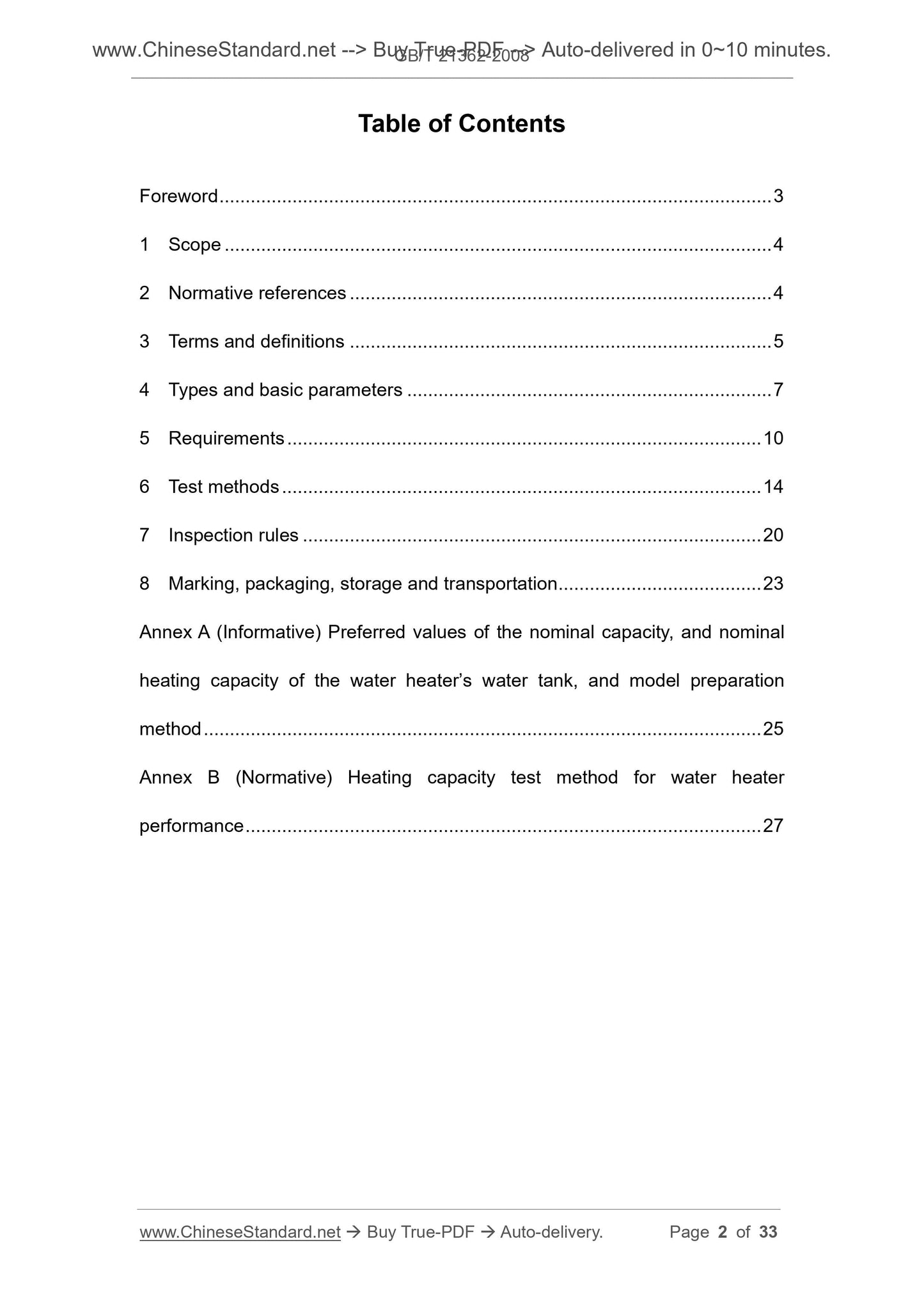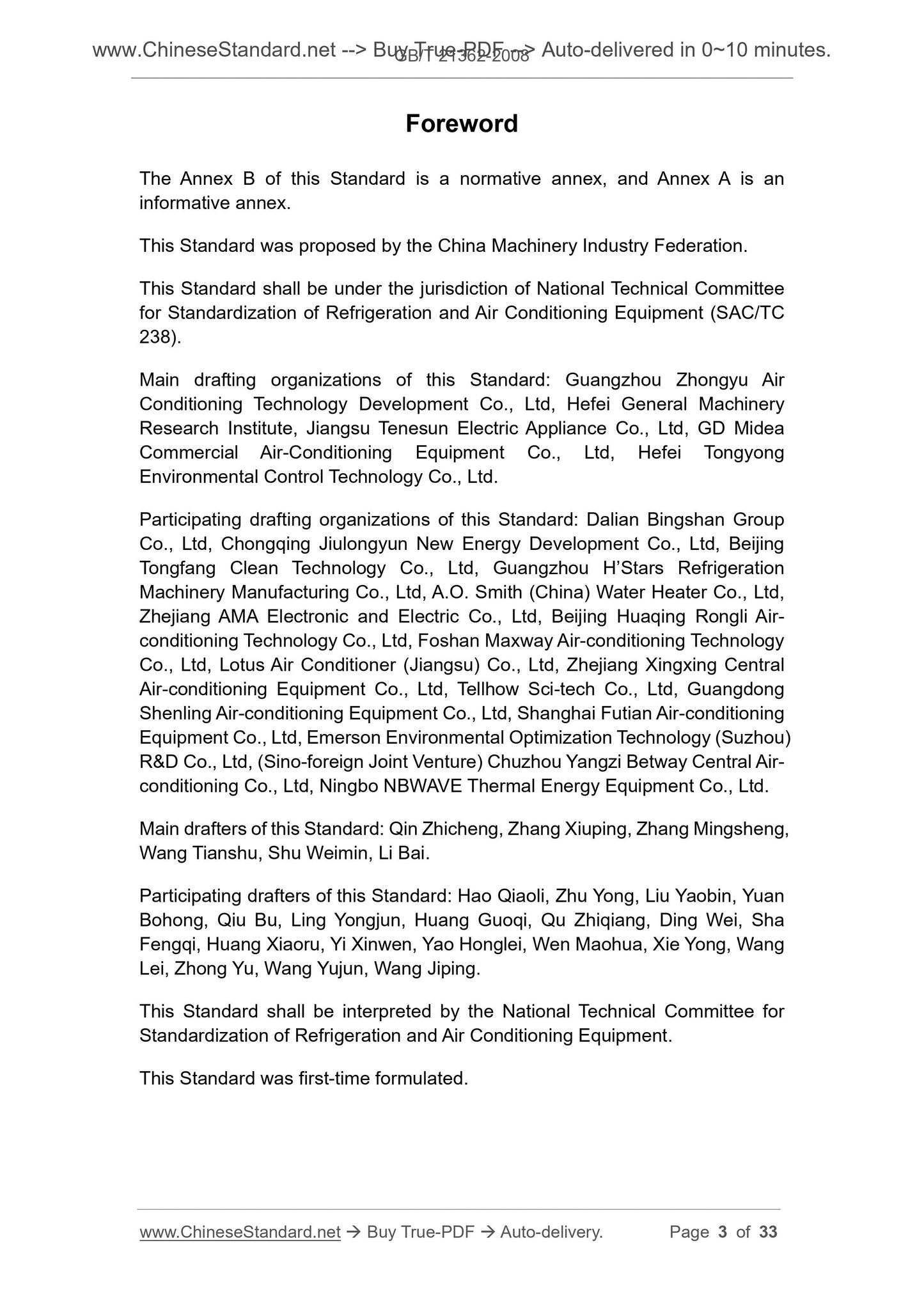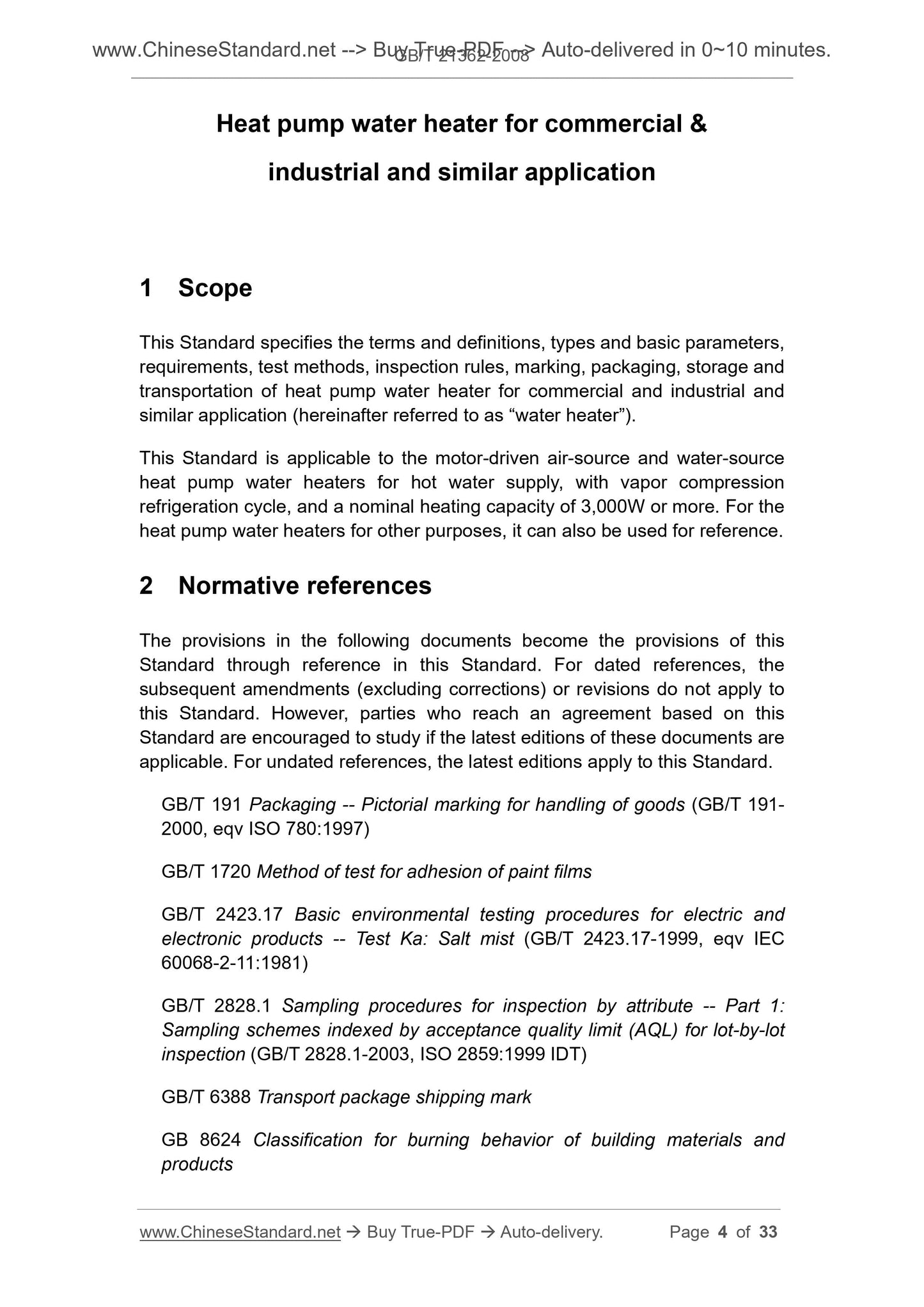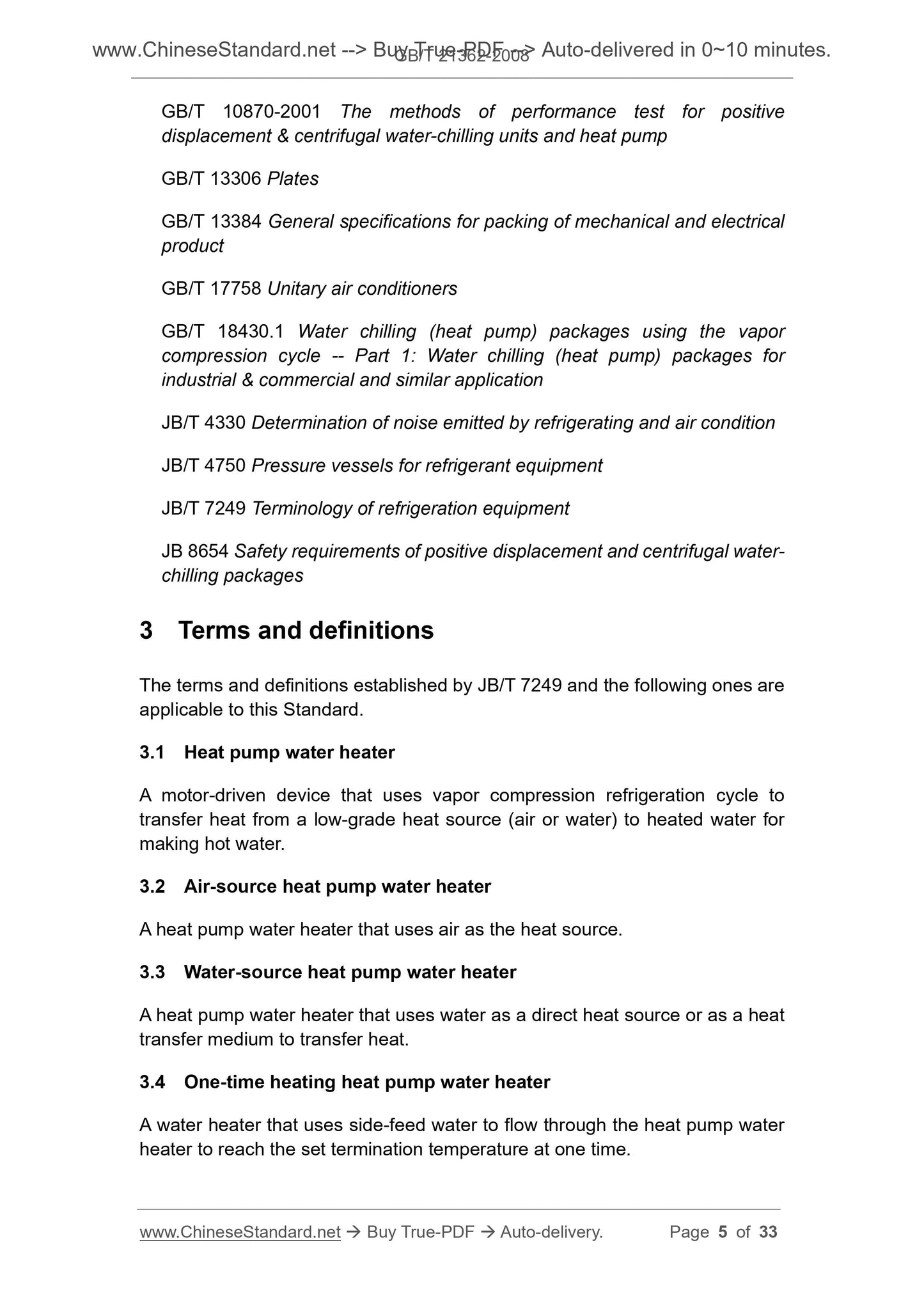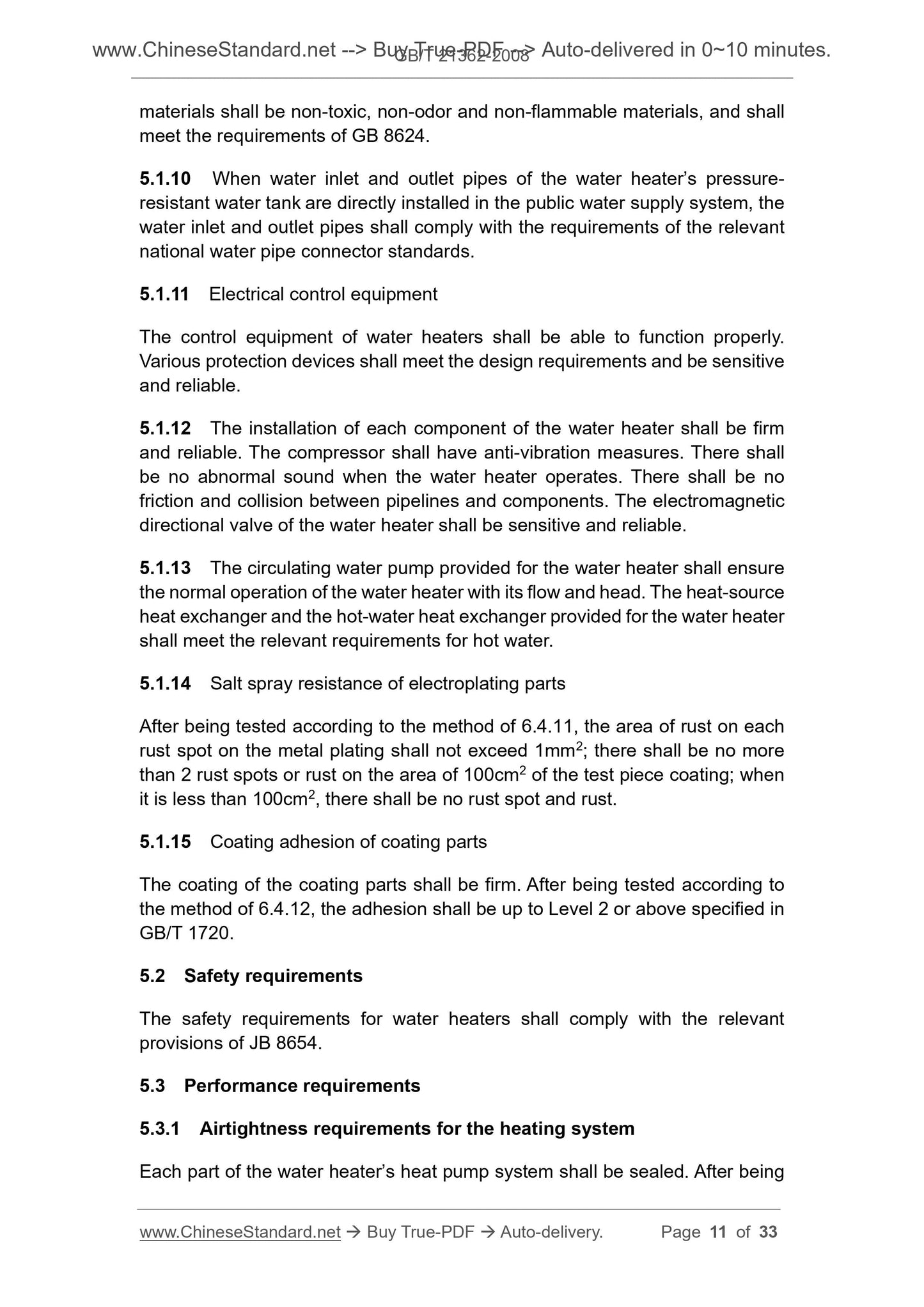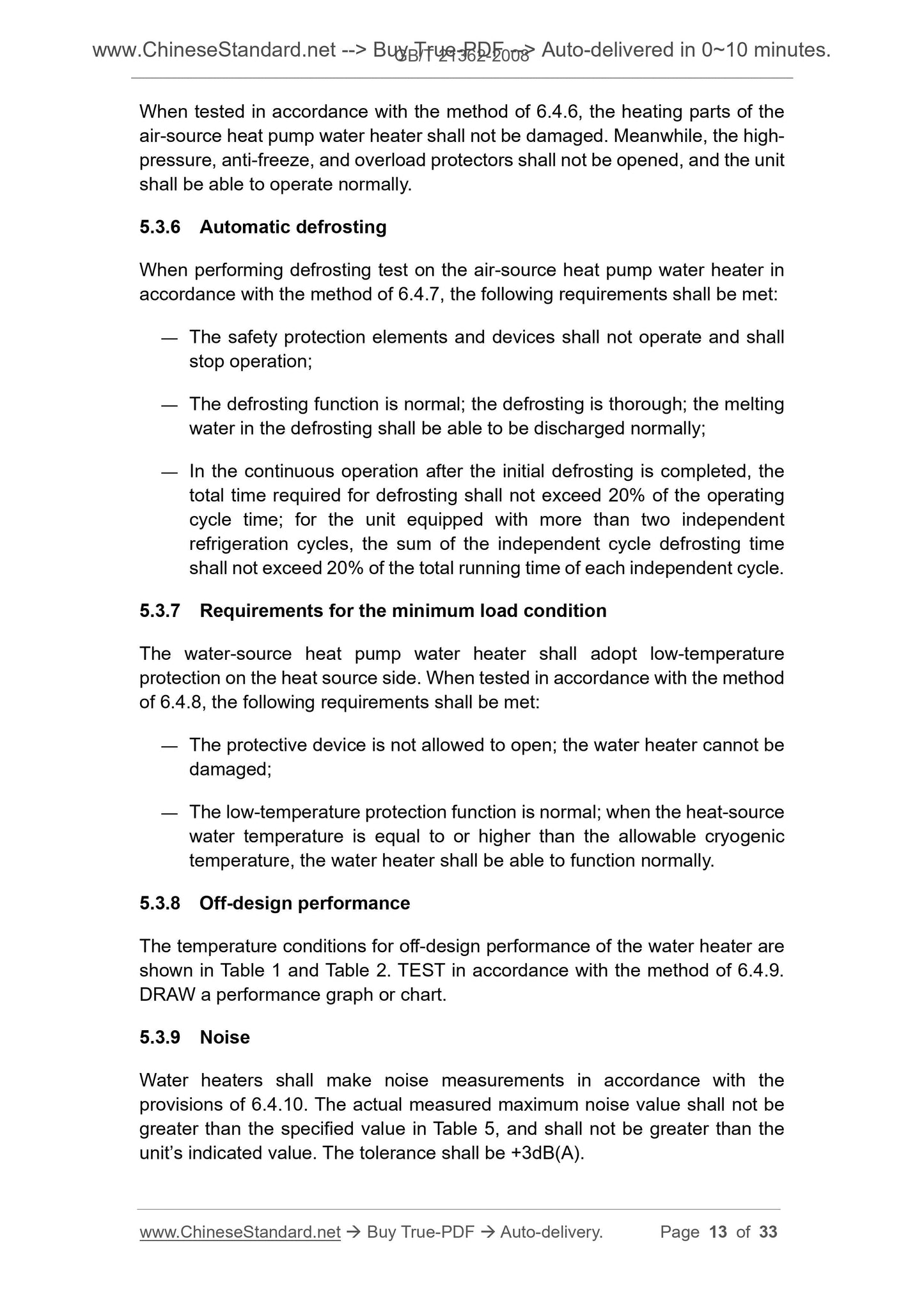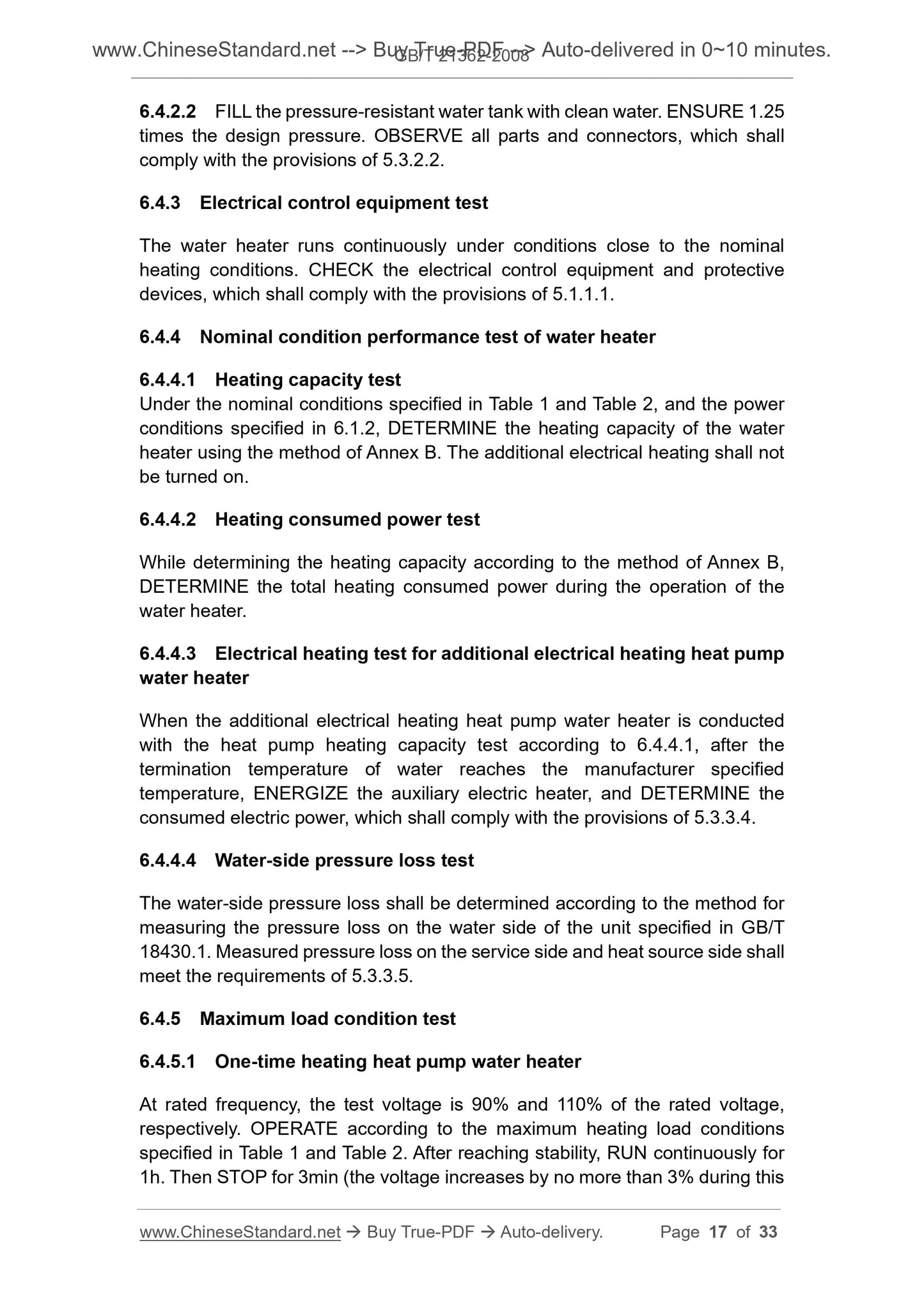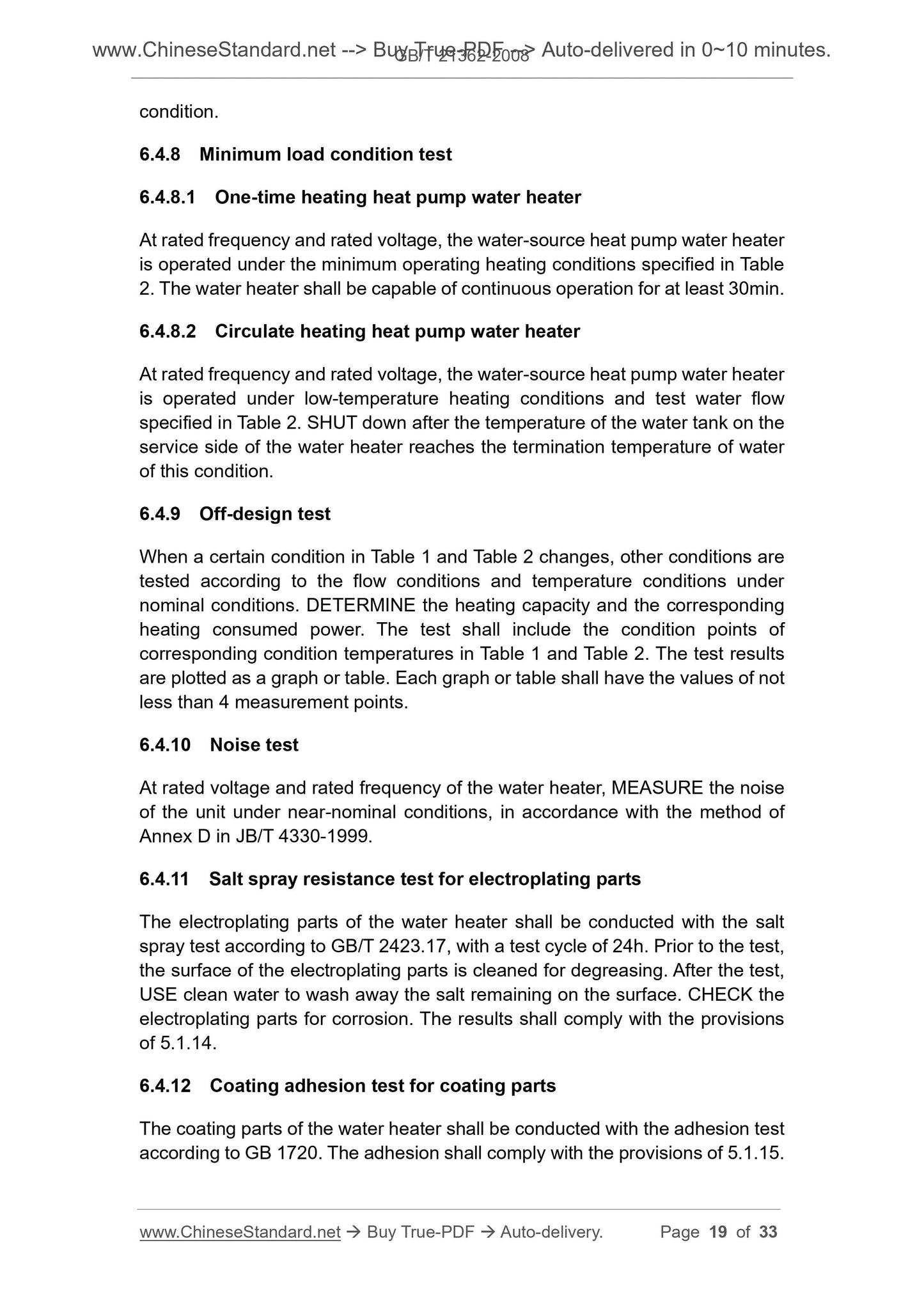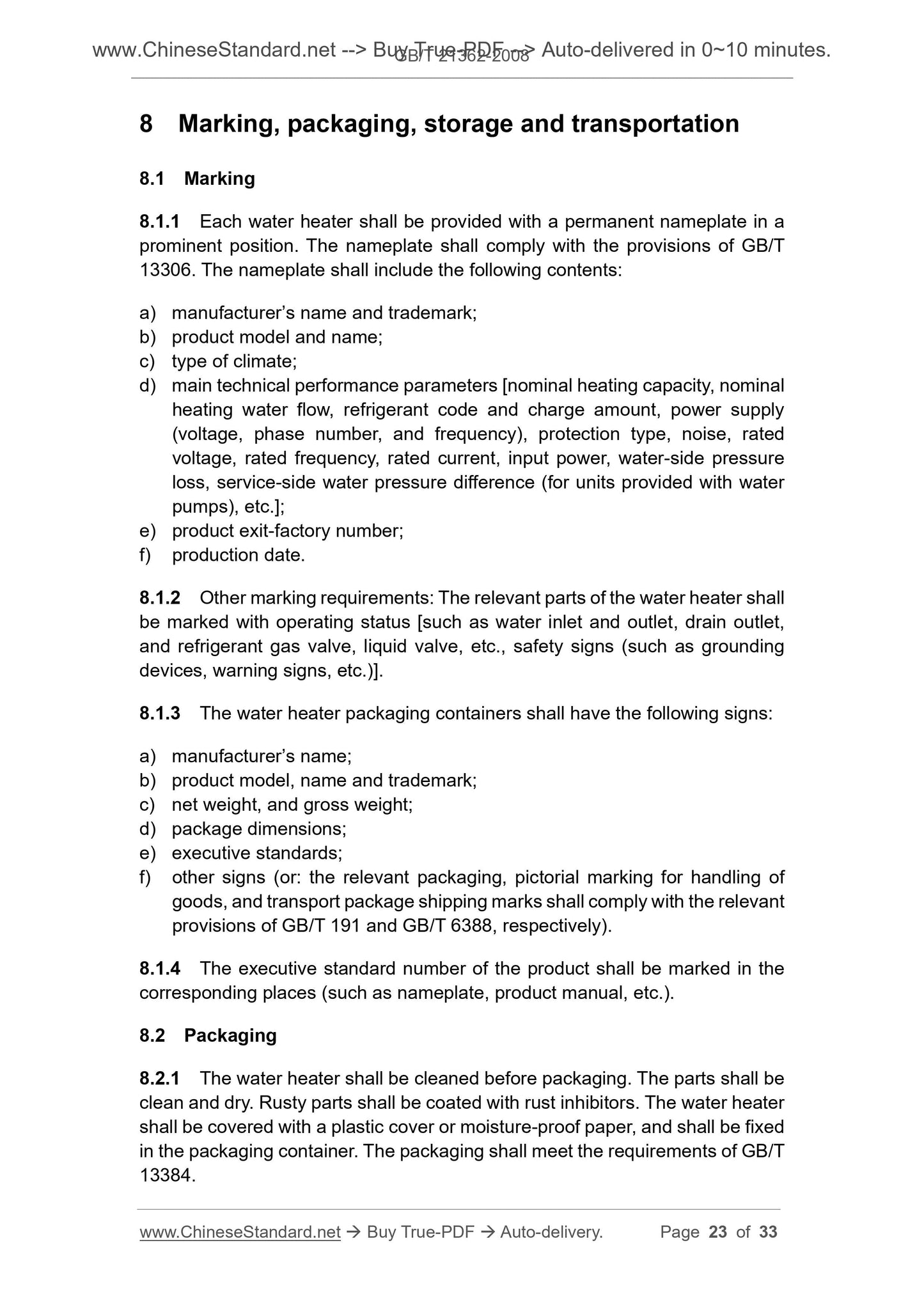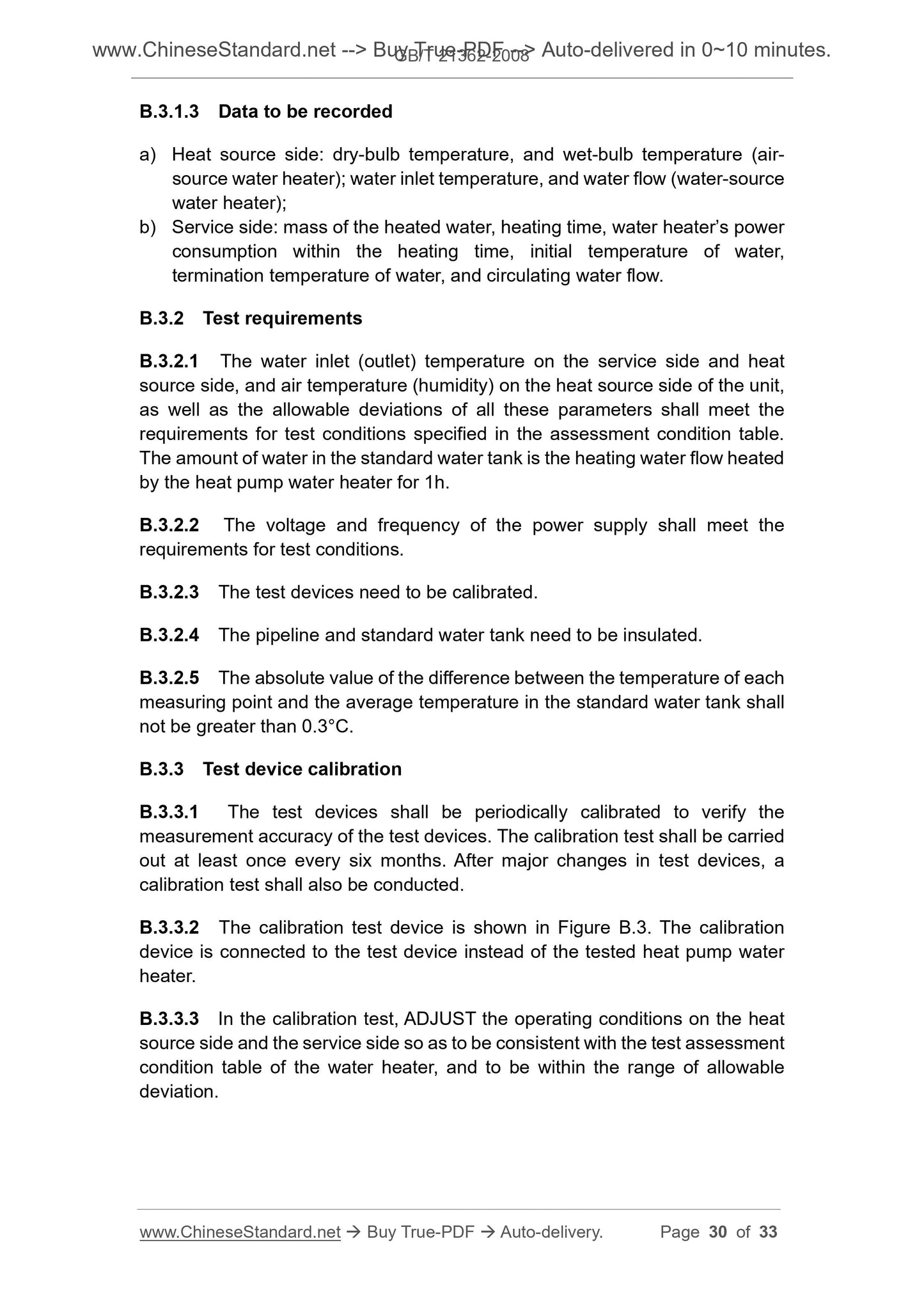1
/
of
11
www.ChineseStandard.us -- Field Test Asia Pte. Ltd.
GB/T 21362-2008 English PDF (GB/T21362-2008)
GB/T 21362-2008 English PDF (GB/T21362-2008)
Regular price
$150.00
Regular price
Sale price
$150.00
Unit price
/
per
Shipping calculated at checkout.
Couldn't load pickup availability
GB/T 21362-2008: Heat pump water heater for commercial and industrial and similar application
Delivery: 9 seconds. Download (and Email) true-PDF + Invoice.Get Quotation: Click GB/T 21362-2008 (Self-service in 1-minute)
Newer / historical versions: GB/T 21362-2008
Preview True-PDF
Scope
This Standard specifies the terms and definitions, types and basic parameters,requirements, test methods, inspection rules, marking, packaging, storage and
transportation of heat pump water heater for commercial and industrial and
similar application (hereinafter referred to as “water heater”).
This Standard is applicable to the motor-driven air-source and water-source
heat pump water heaters for hot water supply, with vapor compression
refrigeration cycle, and a nominal heating capacity of 3,000W or more. For the
heat pump water heaters for other purposes, it can also be used for reference.
Basic Data
| Standard ID | GB/T 21362-2008 (GB/T21362-2008) |
| Description (Translated English) | Heat pump water heater for commercial and industrial and similar application |
| Sector / Industry | National Standard (Recommended) |
| Classification of Chinese Standard | J73 |
| Classification of International Standard | 27.200 |
| Word Count Estimation | 20,287 |
| Date of Issue | 2008-01-14 |
| Date of Implementation | 2008-05-01 |
| Quoted Standard | GB/T 191; GB/T 1720; GB/T 2423.17; GB/T 2828.1; GB/T 6388; GB 8624; GB/T 10870-2001; GB/T 13306; GB/T 13384; GB/T 17758; GB/T 18430.1; JB/T 4330; JB/T 4750; JB/T 7249; JB 8654 |
| Regulation (derived from) | National Standard Approval Announcement 2008 No.1 (Total No.114) |
| Issuing agency(ies) | General Administration of Quality Supervision, Inspection and Quarantine of the People's Republic of China, Standardization Administration of the People's Republic of China |
| Summary | This standard specifies the terms and definitions for commercial or industrial use and similar uses heat pump water heater is, Types and basic parameters, requirements, test methods, inspection rules, signs, packaging, transport and storage. This standard applies to the use of motor-driven, vapor compression refrigeration cycle, the nominal heating capacity of 3000W over to air, water as a heat source to provide hot water for the purpose of heat pump water heater. Other uses of the heat pump water heater can also refer to the use. |
Share
